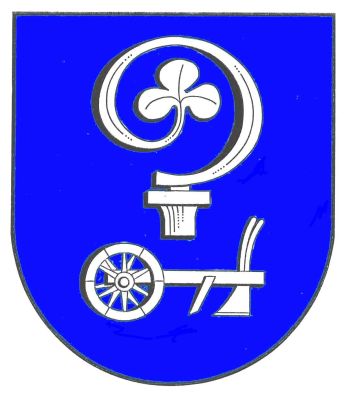Fuhlendorf: Difference between revisions
Knorrepoes (talk | contribs) m (Text replacement - "/Arms of " to "/Arms (crest) of ") |
Knorrepoes (talk | contribs) m (Text replacement - "{{media}}" to " {{de1}} {{media1}}") |
||
| Line 27: | Line 27: | ||
The blue colour is a canting element for Fuhl, from 'faul', which here means standing or very slowly flowing water. | The blue colour is a canting element for Fuhl, from 'faul', which here means standing or very slowly flowing water. | ||
{{ | |||
{{de1}} | |||
{{media1}} | |||
[[Civic Heraldry Literature - Germany|'''Literature''']]: Kommunale Wappenrolle Schleswig-Holstein | [[Civic Heraldry Literature - Germany|'''Literature''']]: Kommunale Wappenrolle Schleswig-Holstein | ||
Revision as of 11:32, 26 December 2022
This page is part of the German heraldry portal |
Heraldry of the World |
|
German heraldry:
|
Selected collector's items from Germany:
|
FUHLENDORF
State : Schleswig-Holstein
District (Kreis) : Segeberg
Amt : Amt Bad Bramstedt-Land
| German |
In Gold ein erhöhter grüner Berg, darin unter drei silbernen Laubblätter ein durchbrochener schmaler silberner Wellenbalken, darunter ein goldenes Amulett. |
| English | No blazon/translation known. Please click here to send your (heraldic !) blazon or translation |
Origin/meaning
The arms were officially granted on August 23, 1991.
Both elements of the arms refer to the history of the village. The village is first mentioned in 1189 as a possession of the Reinfeld Abbey. This is symbolised by the crosier in the arms. The (medieval) plough indicates the development of the village as an agricultural settlement, and to the importance of agriculture in general until present times.
The blue colour is a canting element for Fuhl, from 'faul', which here means standing or very slowly flowing water.
Literature: Kommunale Wappenrolle Schleswig-Holstein


